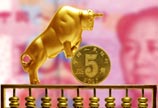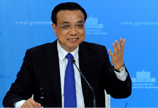Backgrounder: Regional Comprehensive Economic Partnership
NAY PYI TAW - Leaders from the Association of Southeast Asian Nations (ASEAN) and its partner countries gathered here Thursday for a meeting, with discussions on measures to push forward a Regional Comprehensive Economic Partnership (RCEP) expected to be high on the agenda.
RCEP is a free trade agreement (FTA) scheme of the 10 ASEAN member states and its FTA partners - China, Japan, South Korea, India, Australia and New Zealand - which is to be concluded by the end of 2015. It is based on open accession, enabling any of the ASEAN FTA partners to participate in the bloc, either from the outset or when they are ready to join on a later date.
Aimed at removing intra-region trade barriers, creating and optimizing liberal investment climate and expanding trade of services, RCEP will also cover fields like intellectual property rights protection and competition policies and have broader and deeper engagement with significant improvements over the existing FTAs between ASEAN and its partners while recognizing the individual and diverse circumstances of the participating countries.
RCEP could potentially transform the region into one of the world's largest free trade areas that comprises over 3 billion people with a combined GDP of about 17 trillion US dollars.
The plan for the RCEP was first mooted at the 18th ASEAN Economic Ministers Meeting in Nay Pyi Taw in February 2011, where the economic leaders, eyeing a comprehensive free trade agreement with its dialogue partners, brought forward a draft on building the RCEP.
At the 19th ASEAN summit held in November 2011 in Bali, Indonesia, the leaders officially endorsed the RCEP and adopted an ASEAN Framework for RCEP, which outlined the general principles for establishing the RCEP. During the 44th ASEAN Economic Ministers Meeting and Related Meetings in August 2012 in Cambodia, ministers from the 10 ASEAN nations and six partners agreed to start by the end of 2012 the negotiation among the 16 nations on RCEP.
The start of negotiations for the RCEP was declared by the ASEAN+6 leaders on the sidelines of the 21st ASEAN Summit in Phnom Penh, Cambodia in November 2012.
The first round of negotiations on the RCEP kicked off in May 2013 in Bandar Seri Begawan, Brunei, by ASEAN and its six FTA partners on the heels of the 22nd ASEAN Summit, as officials of the 16 governments participating in the RCEP gathered to start detailed negotiations.
The second round of RCEP negotiations was held in September 2013 in Australia, where delegations primarily focused on trade in goods as well as trade in services and investment.
At the third round of the RCEP negotiations in Kuala Lumpur, Malaysia, in January this year, participating countries pursued an intensive exchange of views to advance the negotiations while continuing technical work on trade in goods, services and investment.
The fourth round of negotiations was held in April in Nanning, China, with a focus on tariff concessions and service and investment liberalization. The fifth round of talks held in Singapore in June discussed a framework for tariff bargaining and reducing non-tariff barriers, such as sanitary measures and customs formalities.
During the previous rounds of talks, seven working groups have been established for detailed cooperation. The groups cover goods and service trade, investment, economic and technological cooperation, intellectual property rights, competition policies and dispute settlement.
The next round of negotiation is scheduled to take place on Dec. 1-5 in Greater Noida, India.



